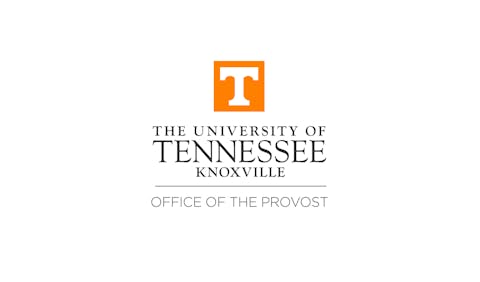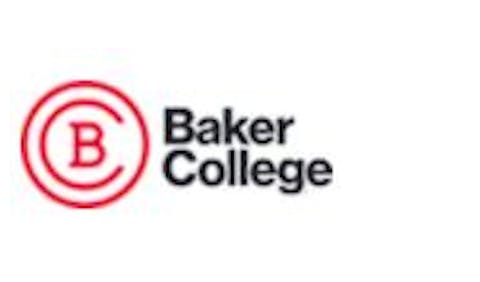To get to the office of Dr. Sylvester James Gates, Jr. – the world-renowned theoretical physicist credited with pioneering a concept known as supersymmetry – you have to walk through an anterior conference room on the first floor of the John S. Toll Physics Building at the University of Maryland. The walls are bedecked with a dozen or so framed color images of Adinkras. That’s the West African—inspired name that Gates and several close colleagues bestowed upon the geometric diagrams they use to represent mathematical relationships between certain particles and their yet-to-be-discovered “superpartners.” A whiteboard inside the room bears a sketch drawn in green magic marker of a bespectacled Gates with his signature Afro. “What we do here,” the artist wrote alongside the caricature of Gates, “is meditate on the universe & MATH.”
From All-Black School to National Medal of Science: A Journey of Mathematical Discovery
The hundreds of books that line the shelves behind Gates’ desk only support that claim. The topics range from calculus to cosmology. Gates co-authored one of the books: Superspace, or One Thousand and one Lessons in Supersymmetry. Among the various photographs, one picture – nestled between a book called The Most Wanted Particle and another called Universe Down to Earth by his esteemed colleague, Neil de Grasse Tyson – stands out from the rest. It shows Gates shaking hands with President Barack Obama, who had just presented him with the National Medal of Science – an honor Gates says he didn’t even know existed until he began service on the President’s Council of Advisors on Science and Technology, or PCAST, in 2009. Gates was one of a dozen scientists who received the honor in 2013 for the year 2011 in a ceremony that had been postponed due to the 2012 election.
“When I heard about it, I said, ‘Well, that’s nice,’ but I had no idea that somebody thought I should become a recipient,” says Gates, who is the 2025 recipient of the Dr. John Hope Franklin award, presented by Diverse.
“So, I’m stunned first because, quite frankly, as an African American, outside of entertainment, it’s very seldom that we are recognized for what we do,” Gates adds. “I was okay with that because I wasn’t doing things for recognition. I love what I do, and I do physics that nobody else in the world can do. I create mathematics that nobody else has created before me. That’s what I do and that’s what excites me about my career.
“So, to have people turn around and say, ‘We know you’ve done this, and here’s this medal,’ came as a total surprise to me.”
The recognition follows decades of Gates’ diligent efforts to provide students around the world with a strong science education like the one he obtained at an all-Black school in Orlando, Florida back in the 1960s – a school that ultimately launched the first-generation college student to MIT and a remarkable career as a theoretical physicist that spans seven decades and once nearly took him into orbit in the celestial footsteps of friend, fellow MIT alum and astronaut Ron McNair, whom he spoke with six months prior to the tragic Space Shuttle Challenger explosion that claimed his life in 1986.
“’Why don’t you apply?’” Gates says McNair told him in reference to becoming an astronaut. “So, I did. I didn’t quite make the final cut but got pretty close.”
“A Simple, Fallen Mathematician”: The Humble Genius Behind Supersymmetry
Former students praise Gates for the great level of personal investment that he makes in his students’ growth and success.

“Even when he was incredibly busy with his time split between being the Brown Theoretical Physics Center Director, the American Physical Society President, and the Ford Professor of Physics at Brown, he always made himself available,” says Dr. Aleksander Cianciara, a former graduate student of Gates during his time at Brown University from 2017 to 2022.
“I also love how he’s able to connect ideas from different areas in unexpected and nontrivial ways,” says Cianciara, now a senior financial engineer at a firm on the East Coast. “For example, I once forwarded him a lecture I thought might help us with a tricky mathematical problem. He watched it, took a nap, and immediately upon waking, sent me an email walking me through the calculations I needed to do—and even predicted the exact result I’d find. He was right.”
Colleagues commend Gates for the plainspoken manner in which he describes his scholarly pursuits.
“Jim was one of the speakers that was easiest to understand,” recalls Dr. Kevin Iga, a professor of mathematics at Pepperdine University and a collaborator on Gates’ work on Adinkras, regarding the time he first met Gates in the early 2000s at an annual summer workshop on math where Gates was presenting in Park City, Utah.
Adinkras and Beyond: Visualizing Complex Mathematical Relationships
Iga says he has been particularly impressed with Gates’ work overseeing Summer Student Theoretical Physics Research Session – a summer science program for undergrads – which Gates helped launch and direct at the University of Maryland from 1999 to 2017, at Brown University during a five-year stint there, and came back to UMD with Gates after his return in 2022.
“It was fascinating to see undergrads working hard on ideas normally reserved for more advanced researchers, and Jim was always encouraging in the best way possible, by actually believing that they had something to contribute,” Iga says. “He would get them to explain their ideas clearly by saying silly things like, ‘You’re going to have to slow down: I have only two neurons left.’ But his effect was also in modeling what it was to be a successful researcher.”
The fruits of Gates’ efforts to provide strong science education can be found across the globe.
“Professor Gates has been strongly supportive of the African Institute for Mathematical Sciences (AIMS) which my colleagues and I founded in 2003,” says Dr. Neil Turok, who holds the Higgs Chair of Theoretical Physics at the University of Edinburgh. Turok says the institute is now the “largest and strongest network of centres of excellence in mathematical sciences in Africa, with 3500 alumni at masters level.”
Despite his many accomplishments, meticulously documented in a 137-page curriculum vitae that lists dozens of speeches, scholarly publications, honorary degrees and faculty positions, Gates loathes being referred to as “Dr. Gates” or “Professor Gates.” His disdain for formal titles is reflected in a January email to the National Society of Black Physicists regarding a mix-up about whether Gates – who once served as president of the organization – had a lifetime membership.
“I often tell people who write to me using titles that I am a simple, fallen mathematician, country theoretical physicist who simply digs mathematical ditches,” Gates wrote to an official in the Black physicists organization, punctuating the statement with a smiley face emoji. “I am much more comfortable if people call me ‘Jim.’”
“Mathematics Is a Family Business”: Inspiring the Next Generation of Black Scientists
Gates was born in 1950 in Tampa, Florida to Sylvester Gates, Sr., who served in the U.S. Army, and his wife, Charlie Anglin Gates.
Both parents provided the fuel that fed Gates’ scientific mind. One of his earliest memories of his mother, who died when Gates was young, is when she took him to see “Spaceways,” a science fiction movie, when he was four. His father gave him science fiction books that further fueled his imagination.
Gates often wishes his father, who passed away in 2007, could have been there to witness him receiving the National Medal of Science from the nation’s first Black president.
“If he had made it, man, that would have been big for our family,” Gates says. “I’m the first person in my family to go to college. My dad never had the opportunity to go to college.”
Despite the lack of higher education, Gates says his forbears had a certain knack for mathematics.
“My grandfather couldn’t read or write but he could add and subtract,” Gates says. “Dad never finished high school, but he got a GED, and I remember watching him study trigonometry and some algebra. It was clear he was having fun.”
Gates’ educational trajectory– documented in the many presentations he has been called upon to give about his life – belies some of the assumptions people sometimes make about the supposed inferiority of all-Black schools, such as Jones High School in Orlando, where a teacher named Freeman Comey, who taught 11th grade physics, helped Gates see the connection between math and the real world.
“These people were like superstars for me,” Gates says. “In fact, I have told people, I felt like someone had put me on the top of Mount Olympus,” he says, recounting educators who were folks of “fantastic ability” and at “every level of excellence that you could ever think of.”
Gates credits Comey and Jones High School with putting him on the path to MIT, where in 1973 he authored what is believed to be the school’s first thesis on supersymmetry. He graduated from MIT with a PhD in physics in 1977 – one year after McNair, the astronaut, earned his.
Gates’ legacy lives on in his children – twins who’ve both gone on to follow in their father’s footsteps.
“My daughter is a theoretical physicist who is at Harvard right now. My son’s about to get his PhD in biology,” says Gates. “So, in our family we’ve never experienced this divide that a lot of people in our community feel – that there’s a divide between Black culture and mathematics. We’ve never actually had never experienced that. It’s part of our family dynamic. Well, I tell people, it’s been a family business, quite frankly.”















